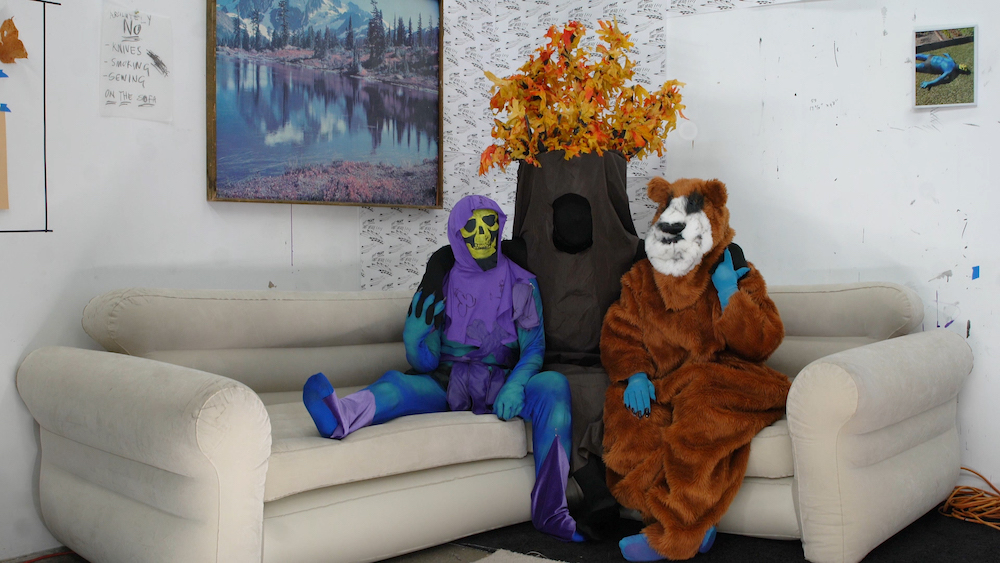London-born, Los Angeles–based video artist and animator Olivia Mole is known for her recurring characters in many of her works, seen in pieces presented at the Hammer as well as in her solo show at Gattopardo last year, “A Bear Shits in the Woods.” Always with a sense of humor, Mole’s work probes pop and consumer culture and verges on the absurd. Mole’s exhibition at Tiffany’s, organized by Adam Verdugo, opened in April and is titled “Dopesheet Batman”; based on an original animation dope sheet of the iconic moment of Daffy Duck stating, “I’m Batman,” Mole’s new body of work explores the gaps between aspiration, identity and presentations of self.
I saw Fox Maxy’s Gush play at the Hammer last year because my friend Vanessa Gonzalez Medina recommended it to me, so I went into it pretty cold. It’s intense and exhilarating to watch; superficially it’s like an extended sort of TikTok, like watching a cascade of short videos one after the other. Some scenes are more designed and constructed as opposed to the way that everyone uses their camera in their life. Maxy is Payómkawichum and Mesa Grande Band of Mission Indians, and she has made a lot of work about the colonization of Indian land within the USA and at the border of Mexico. The complexity in her work—it’s not as simple as the colonizer versus the colonized—exists in setting the vicissitudes of daily life within the diverse struggles of Native American people to protect their land, status and existence. It adds to its genius that she is working really solidly within a cultural landscape of video, cinema and social media while dealing with this grand subject matter of surviving as a part of a generation coming up in the terrifying narrative of global warming.

Still from Fox Maxy’s Gush, 2023.
The thing that really clicked with me was the animations in the film—every so often the film goes into CG animation with floating innards of the body, very shiny guts, eyeballs and organs writhing around in space, little moments of blood. While I was watching the film, absorbing all of it, I realized it’s like a deconstructed horror film, fragmented and not put back together, in a constant state of flux. It defies Hollywood narrative structure. Furthermore, when accounts about the end of the world and the apocalypse arise in mainstream media, it’s as if the end is yet to come. But for Native American people and other colonized people, it has already come, and it’s like Gush is set within that. It seems to be so unstructured yet is tied to a cinematic genre that is usually very set with tropes and expectations. She messes with the foundation and then brings “real stories” into that with horror as a stealth genre. But it’s also so energetic and filled with vitality and humor. It doesn’t suggest a submission to what’s happening, to just have a good life with what we can. Nor is it defeatist in the face of catastrophe. It’s full of pain, joy and sadness, inhabiting this kind of state of horror with a fierce commitment to life. — As told to Alex Garner


